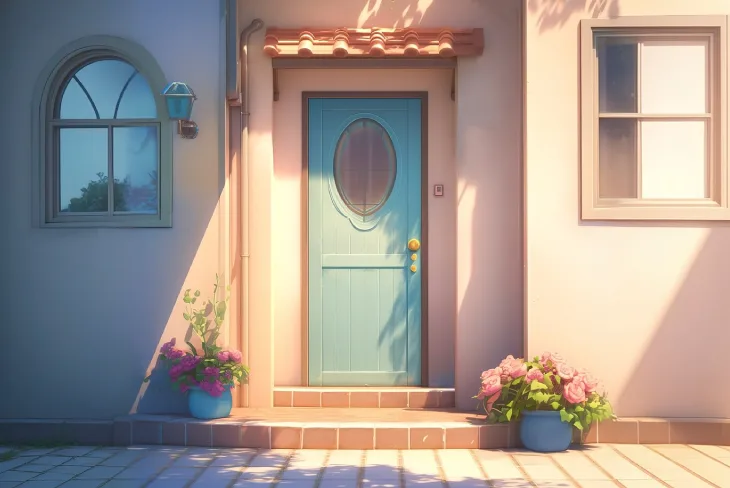You walk down a quaint cobblestone street in a charming European village. The sun’s rays dance off gleaming windowpanes, and ornate doors beckon with promises of cozy interiors. That’s the magic of European windows and doors – they’re not just functional elements, but works of art that tell stories of centuries-old craftsmanship and design.
European windows and doors have been turning heads and capturing hearts on this side of the Atlantic for years now. But what’s all the fuss about? Why are homeowners and architects alike going gaga over these continental creations? Well, buckle up, because we’re about to take a whirlwind tour through the world of European windows and doors that’ll leave you seeing your home in a whole new light.
The History Behind European Windows and Doors
Let’s wind back the clock and see how these marvels came to be. European windows and doors aren’t just pretty faces – they’re the result of centuries of innovation and adaptation. Back in the day, when castles were all the rage, fenestration systems were more about keeping the baddies out than letting the light in. Think narrow slits that’d make today’s sunbathers weep.
But as times changed, so did the windows. The Renaissance brought with it a love for all things light and airy. Suddenly, bigger was better, and glass became the hottest thing since sliced bread. Fast forward to the Industrial Revolution, and mass production techniques allowed for even more impressive feats of window wizardry.
Doors, too, got their time in the spotlight. From the heavy wooden barriers of medieval times to the intricate designs of the Victorian era, European architectural hardware has always been about making an entrance – literally and figuratively.
What Makes European Windows Special?
So, what sets European windows apart from their American cousins? The term ‘European windows and doors’ is a catch-all term referring to products that not only originate in Europe but also share a variety of characteristics. Continental fenestration systems are like the Swiss Army knives of the window world – they’re versatile, efficient, and oh-so-stylish.
First up, materials. While wood remains popular, Europeans have been leading the charge with high-tech materials like uPVC composite frames and aluminum. Materials such as uPVC, aluminum alloys, engineered wood, and low-emissivity glass have seen price increases due to supply chain disruptions, inflationary pressures, and higher energy costs. These bad boys offer durability that’d make a tank jealous, all while keeping your energy bills from going through the roof.
Design-wise, European windows are chameleons. They can go from sleek and modern to charmingly rustic faster than you can say “Gesundheit.” But the real showstopper? The way they open. European windows don’t just swing out like a saloon door – they tilt, they turn, and they do practically everything but the dishes.
The European Union’s Energy Performance of Buildings Directive (EPBD) requires all new constructions to meet nearly zero-energy building (nZEB) standards, compelling architects and developers to adopt high-performance windows and doors with superior thermal insulation properties. Energy-efficient glazing in European windows has got it in spades. With their multi-point locking systems and double or triple glazing, these windows seal tighter than a drum.
Types of European Windows
Now, let’s talk shop about the different types of European windows you might encounter on your home improvement journey.
Tilt and Turn Windows – The Most Popular Style
If European windows had a poster child, it’d be the tilt-and-turn window. With tilt and turn windows and patio doors, you are able to open the vent inwards just like a door and also tilt the vent by 10 to 15 degrees for easy ventilation. These clever contraptions can open in two ways: swing open like a door for a full opening, or tilt inward from the top for ventilation. It’s like having two windows for the price of one!
Casement Windows – The Classic Choice
Casement window styles are the old reliables of the European window world. Hinged on one side, they open outward like a book. They’re great for catching those summer breeze,s and they seal up tight when the weather turns nasty.
Hopper Windows – The Space Savers
Hopper window mechanisms are the unsung heroes of small spaces. These little guys are hinged at the bottom and open inward from the top. They’re perfect for basements or bathrooms where you want ventilation without sacrificing privacy.
European Door Designs
European doors aren’t about to let windows hog all the limelight. From grand entrances to subtle interior passages, European door hardware designs are all about making a statement.
Entry Doors – First Impressions Matter
European entry doors are like the opening act of a rock concert – they set the tone for everything that follows. Whether it’s a massive wooden door with intricate carvings or a sleek, modern design with bold colors, these doors are all about curb appeal.
Patio and Balcony Doors – Blurring the Lines
Europeans know a thing or two about indoor-outdoor living, and their patio doors prove it. Lift and slide door systems are a popular choice, allowing for massive openings that practically erase the boundary between inside and out. It’s like having a disappearing wall – now you see it, now you don’t!
Interior Doors – Silent Statements
Even inside, European doors keep the style quotient high. Pocket door installations that slide into the wall, barn-style doors that add a rustic touch, or minimalist designs that blend seamlessly with modern interiors – there’s a European door design for every taste.
Why Choose European Windows and Doors?
By now, you might be thinking, “Sure, these European windows and doors sound great, but what’s in it for me?” Well, pull up a chair, because the benefits are about to roll in like a tsunami of awesomeness.
Studies show that high-quality European windows can reduce energy loss by up to 70% compared to standard single-pane windows. Thermal insulation properties in European windows and doors are like the superheroes of the insulation world. They fight off drafts, keep your home cozy, and might just make your energy bills shrink.
Security is another feather in their cap. With multi-point locking mechanisms that’d make a bank vault jealous, European windows and doors offer peace of mind that’s priceless. It’s like having a bouncer for every opening in your house.
The doors and windows industry has significantly reduced its environmental footprint by adopting sustainable practices. A key initiative is using recycled materials, such as wood, aluminum, and composites, to manufacture eco-friendly doors and windows. Sustainable building materials represent another major advantage.
And let’s not forget the eye candy factor. European windows and doors can turn your home from drab to fab faster than you can say “extreme makeover.” They’re like architectural jewelry – they complement your home’s style while adding their unique flair.
European vs. American Windows and Doors
Now, let’s address the elephant in the room – how do European windows and doors stack up against their American counterparts? It’s not exactly a boxing match, but there are some key differences worth noting.
Design-wise, European architectural styles tend to be more streamlined and modern, while American windows often lean towards traditional styles. It’s like comparing a sleek sports car to a classic muscle car – both have their charms.
When it comes to performance, European windows often have the edge in terms of energy efficiency and sound insulation. They’re like the overachievers of the window world, always going the extra mile.
But here’s the kicker – cost. European windows and doors can be pricier upfront than their American counterparts. It’s like choosing between a fancy espresso machine and a regular coffee maker. The espresso machine costs more, but boy, does it make a mean cup of joe.
Here’s a quick comparison to break it down:
| Feature | European Windows | American Windows |
|---|---|---|
| Design | Modern, minimalist | Traditional, varied |
| Opening Style | Tilt and turn, inward | Double-hung, outward |
| Energy Efficiency | Higher | Moderate |
| Cost | Higher upfront | Lower upfront |
| Customization | Limited | Extensive |
Installation and Care
So, you’ve decided to take the plunge and go European. Great choice! But before you start daydreaming about sipping espresso by your new windows, let’s talk installation and maintenance.
Installing European windows and doors isn’t a DIY project unless you’re a secret home improvement guru. These babies need professional window installation to ensure they perform as advertised. It’s like assembling a high-end sports car – you wouldn’t want your neighbor’s kid doing it with a wrench set from the dollar store, would you?
Once they’re in, maintaining European windows and doors is surprisingly simple. A little cleaning here, a little lubricating there, and they’ll keep operating smoother than a buttered slide. Just remember to treat them right – no slamming, no forcing, and no using them as impromptu jungle gyms.
When European Meets American
Now, bringing European windows and doors to American homes isn’t always as simple as plopping a baguette next to a hamburger. There are some challenges to consider.
Building codes in the U.S. can sometimes throw a wrench in the works. It’s like trying to fit a round peg in a square hole – sometimes you need to get creative. But don’t worry, many European manufacturers are hip to this and offer products specially adapted for the American market.
Window customization options are another factor to consider. Americans love to have things their way, and European windows and doors can sometimes be less flexible in terms of sizes and styles. But fear not – with a little ingenuity and the right supplier, you can usually find a happy medium.
Future Trends
What’s next for European windows and doors? Smart home technology has expanded to include smart glass windows, providing more control over privacy and energy efficiency. Smart glass can adjust its tint based on sunlight, temperature, or your preferences.
Smart window technology is making its way into everything, and windows and doors are no exception. Imagine windows that tint themselves on sunny days or doors that recognize you and unlock automatically. It’s like living in a sci-fi movie, minus the alien invasions.
Using recycled materials and energy-efficient glazing represents a shift towards comprehensive sustainability, considering both product performance and ecological and social impacts. Sustainable fenestration design is another big trend. European designers are always pushing the envelope when it comes to eco-friendly materials and energy-efficient designs.
The European windows and doors market size was calculated to be USD 59.09 billion in 2024 and is anticipated to be worth USD 82.15 billion by 2033, from USD 61.29 billion in 2025, growing at a CAGR of 3.73% during the forecast period. The European fenestration market continues to grow, driven by renovation projects and energy efficiency requirements.
Wrapping It Up
As we come to the end of our whirlwind tour through the world of European windows and doors, one thing’s clear – these aren’t just openings in walls. They’re gateways to a different way of thinking about our homes.
European building components bring with them a legacy of craftsmanship, a commitment to efficiency, and a flair for design that can transform a house into a home. They’re like the secret ingredient in a master chef’s recipe – they might not be the main course, but they elevate everything around them.
So, the next time you’re considering a home improvement project, why not add a touch of European sophistication? Whether it’s a sleek tilt-and-turn window configuration or a grand entry door, these continental creations might just be the perfect way to open your home to new possibilities. After all, when it comes to European windows and doors, the world is your oyster – or should we say your escargot?




No Comment! Be the first one.